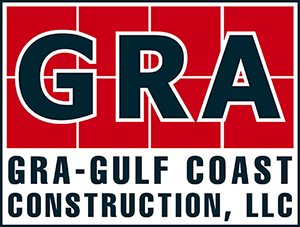Businesses looking for Houston industrial construction have been using the tilt-wall construction method to build office buildings, warehouses and other commercial buildings. This is primarily due to several notable differences between it and the precast concrete building process, one of which is Houston’s agreeable climate.
Tilt-wall construction, which is also known as tilt-up construction, is a building method that involves large slabs of concrete being formed horizontally at the work site before being tilted up into their permanent positions.
While in its original horizontal configuration, the slab form receives footings and panel forms that delineate where doors and windows are to be located. After any debris or water has been removed, concrete is added to the forms to complete the panel-building process. When the concrete has solidified, they are lifted – tilted – upwards into a vertical position. A crane is used to complete this impressive process of moving hundreds of thousands of pounds of concrete into place.
Once erected, the wall receives painting or sandblasting, and any minor imperfections that resulted from the lifting process are fixed.
This method of building is especially popular in southern states due to the pleasant year-round temperatures that they experience, which is friendlier to outdoor construction.
Conversely, the precast concrete building process can be done during any point of the year in any weather conditions as it is completed indoors before the slabs are transported to the work site. This is an especially valuable construction method that is commonly used in places that experience particularly difficult climates such as the Northeast and Midwest. This is primarily due to how difficult it is to cure concrete panels once the temperature drops below 32 degrees. Fortunately, Houston does not experience weather that cold very often.
However, one advantage to using the precast concrete building process in Houston office building construction is that the heavy thunderstorms that occur so often in this part of the country become irrelevant. As a result, time and financial estimates tend to be more accurately met when this method is used.
There are a couple of major disadvantages to utilizing the precast concrete building process, however. The added cost of transporting the slabs from the indoor facility to the work site needs to be taken into account while the size of the concrete slabs have to be much smaller than would be possible when the tilt-up construction process is used onsite; the latter method can move panels reaching 70 feet across and 90 feet high. Obviously, panels of that size cannot be easily transported to the work site.
The tilt-wall construction method has been around for quite some time. In fact, many buildings erected during the Roman Empire about 2,000 years ago are believed to have been built with the tilt-up construction method. A more recent historic example of this process being used took place in the 19th century when wood walls were moved in this manner to build barns.
The first believed instance of concrete being used in this process took place a little more than 100 years ago, and this method became especially popular during the construction boom that followed World War II. The mobile crane helped advance the popularity of tilt-wall construction as the slabs could be moved much more easily with it.
Today, companies use the tilt-up construction method to lift concrete that can weigh up to 150 tons. In Texas, about 75 percent of one-story commercial buildings are now being constructed with this method while LEED construction companies have been using this method in increasing numbers as well.
